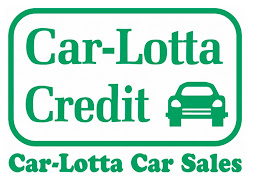Monday, October 26, 2020
Do You Know How To Get The Best Trade In Value For Your Vehicle?
Do you know the value of your vehilce?
Knowledge is power. Before you head to a car dealership you should research the value of your current vehicle using a tool like
Kelley Blue Book. Knowing your trade-in value will let you know if the dealer’s offer is fair.
Make sure you shop around. You should get at least three estimates from competing dealers. This can help ensure you get top dollar
for your old car.
You can trade in a vehicle if you owe money, but it’s important to know that debt still comes out of your pocket.
This means you’ll ultimately get less cash from your trade.
Owe more than your car’s worth? Expect that negative equity to get rolled into your next loan.
A deep clean and a record of repairs can make your car more marketable, and possibly fetch you a higher trade-in price.
So keep that extra paperwork for some added bargaining power.
You’ll need to negotiate. Just because a dealer makes a trade-in offer doesn’t mean you have to accept it.
Following the above tips, like getting multiple offers and knowing your car’s trade-in value, can be powerful negotiating tools.
Car-Lotta reminds you that following these tips can help increase the value of your trade-in, getting you into a new vehicle
for less cash. Once you get the keys to your dream vehicle, you’ll need to make sure it’s protected.
Monday, October 19, 2020
Would You Know How To Avoid Hitting A Deer?
The fall season is beautiful, but it also introduces a few different driving hazards… deer collisions being one of them.
From October to December, mating and hunting season make deer go on the move. For drivers, that means you’re more likely to hit one.
According to the National Insurance Crime Bureau, deer-vehicle collisions are the top animal-related claim in the U.S.
Before you get too worried, here are some helpful tips on how to avoid hitting a deer… and how to handle things if you end up hitting one despite your best efforts.
HOW TO AVOID HITTING A DEER
Know where the deer are likely to be. Areas with high deer populations are normally marked with a bright yellow sign. Deer also tend to graze in wooded areas or open fields. When driving your usual route to work, be attentive to areas where you’ve seen deer in the past – they are likely to cross there again.
Be alert at sunrise and sunset. Deer are more active during dawn and dusk hours.
Use your high beams. When possible, use your high beams for better visibility. The extra light will help make it easier to spot a deer, or other animals, lurking alongside the road.
Don’t rely on deer gadgets. Whether it’s a deer whistle, deer fence or other type of product to scare away the deer… don’t rely solely on them to keep deer away. Research isn’t exact on whether or not these products truly work.
When you see one… you’ll probably see more. Deer travel in groups. If one comes across your path, proceed with caution in case there are more.
Don’t swerve. Swerving isn’t always the safest option. Hitting a deer might often cause less damage than swerving to avoid it… and then hitting a more dangerous obstacle, like a vehicle in oncoming traffic.
Car-Lotta reminds you to wear your seat belt. If you do hit a deer, wearing a seat belt decreases your chances of injury.
Monday, October 5, 2020
Do You Test Your Lights?
Now that the days are getting shorter, you may find yourself driving home from work at dusk. When the sun is beginning to set,
your lights need to be turned on. If you haven’t already, check that all of your lights are in good working order –
including your headlights, side lights, brake lights, and signals. Ask a friend or neighbor to help you check them all.
If any are dim or burnt out, replace them immediately. You will need these lights to see and be seen on the roads this fall.
While you’re at it, wipe down the exterior of the vehicle so that there are no smudges on the headlights that can distort the light.
Car-Lotta reminds you to drive safe!!
Subscribe to:
Comments (Atom)




